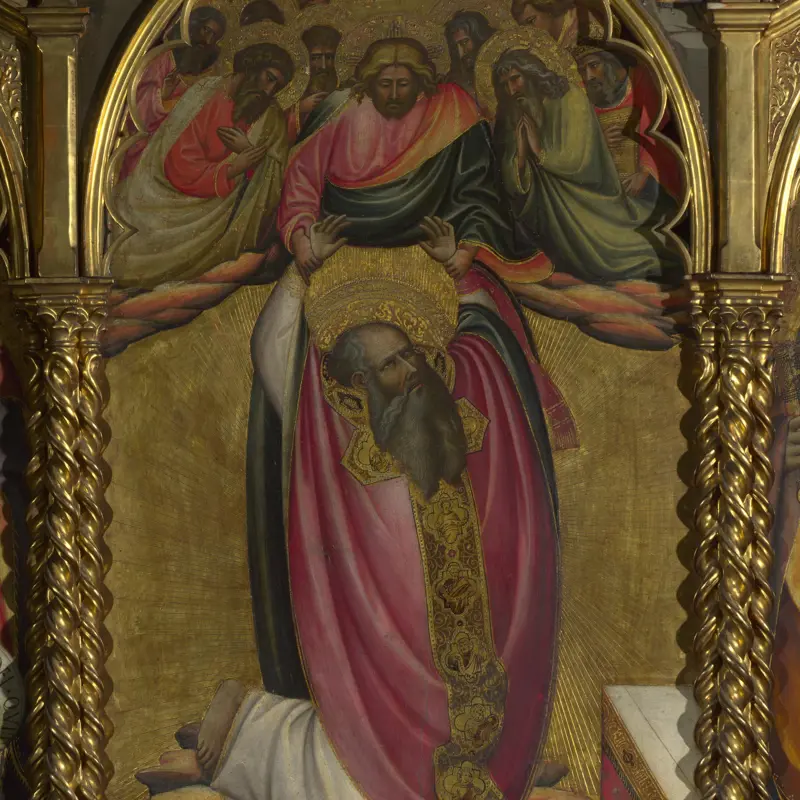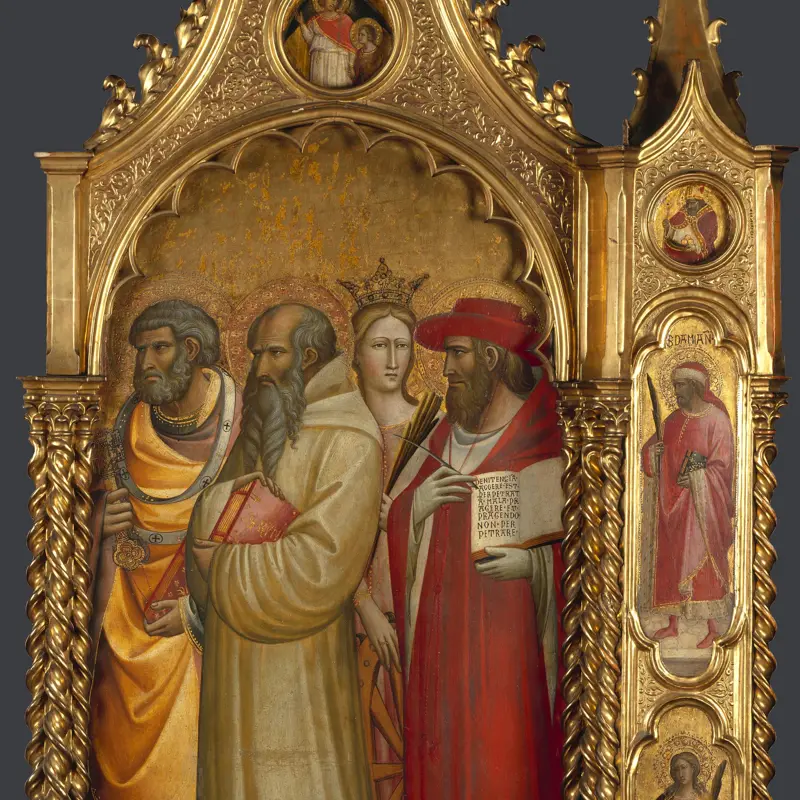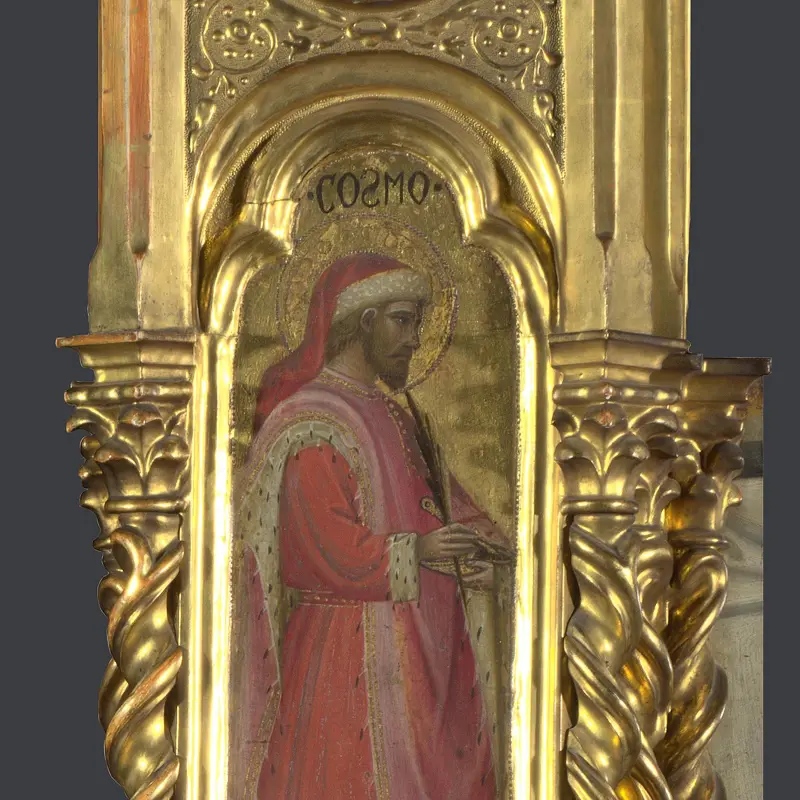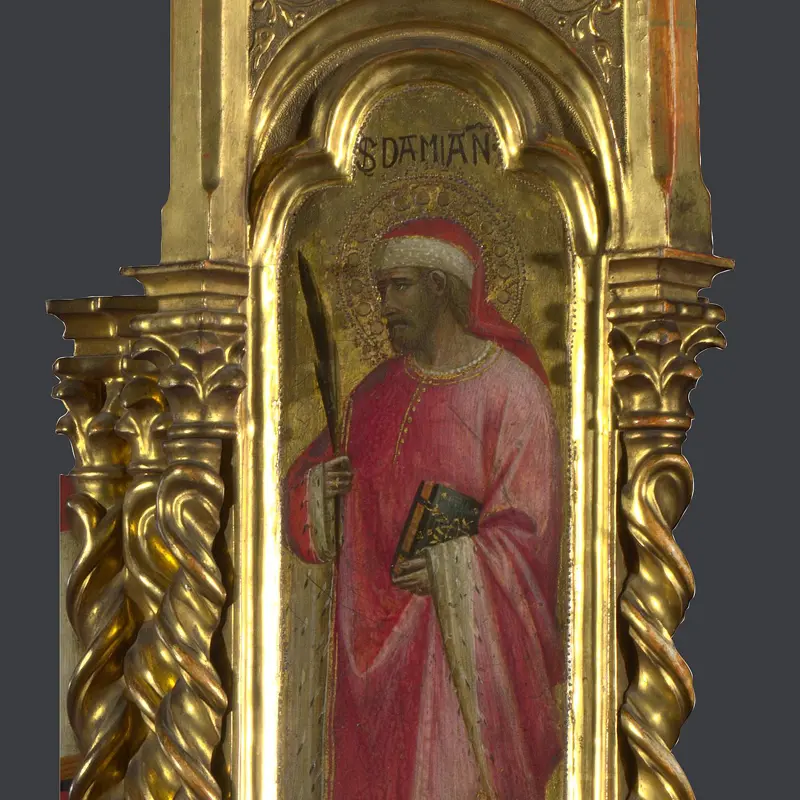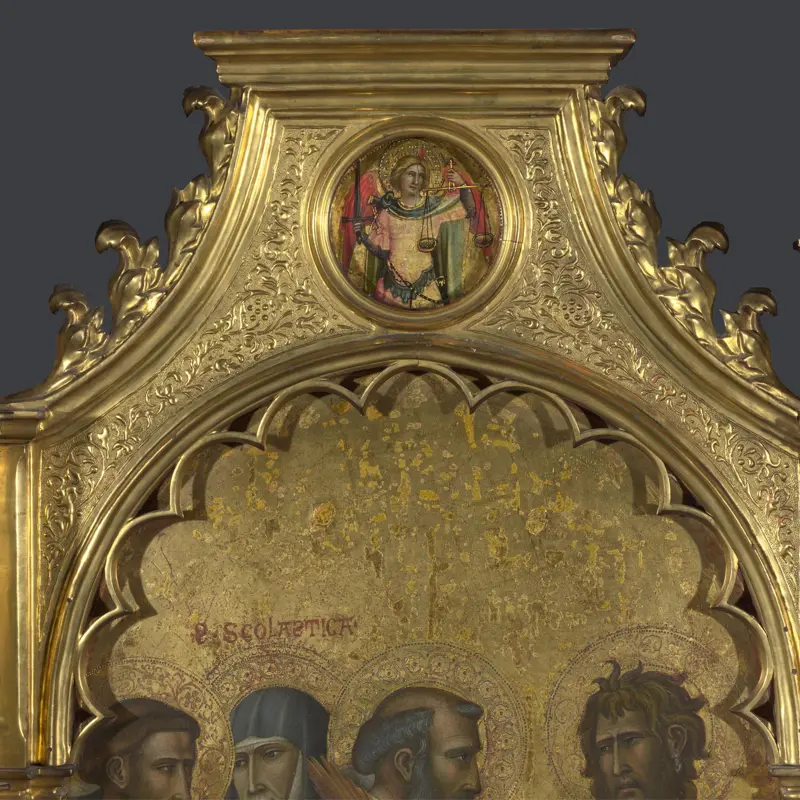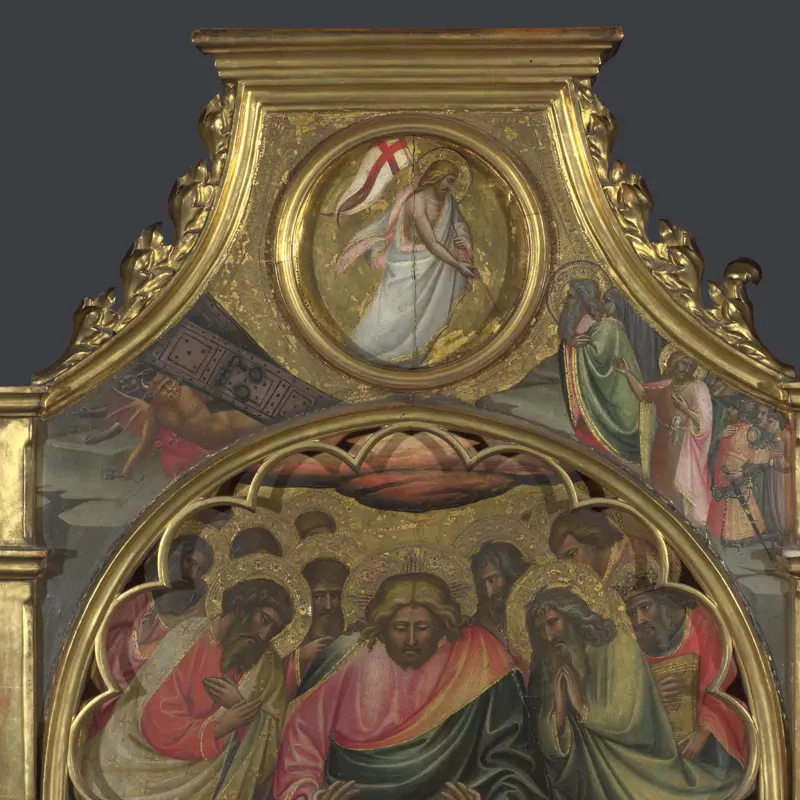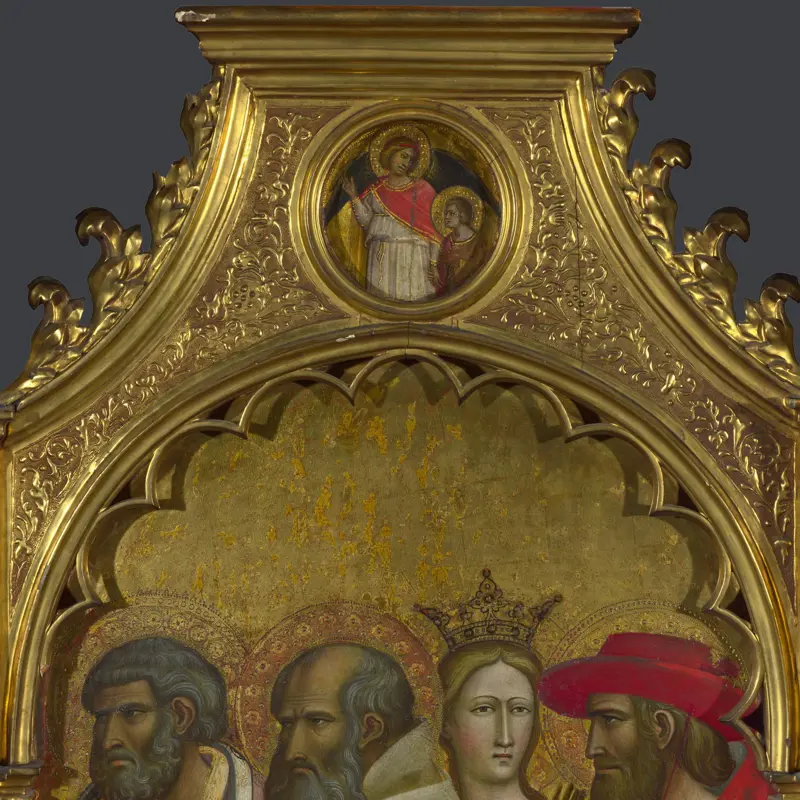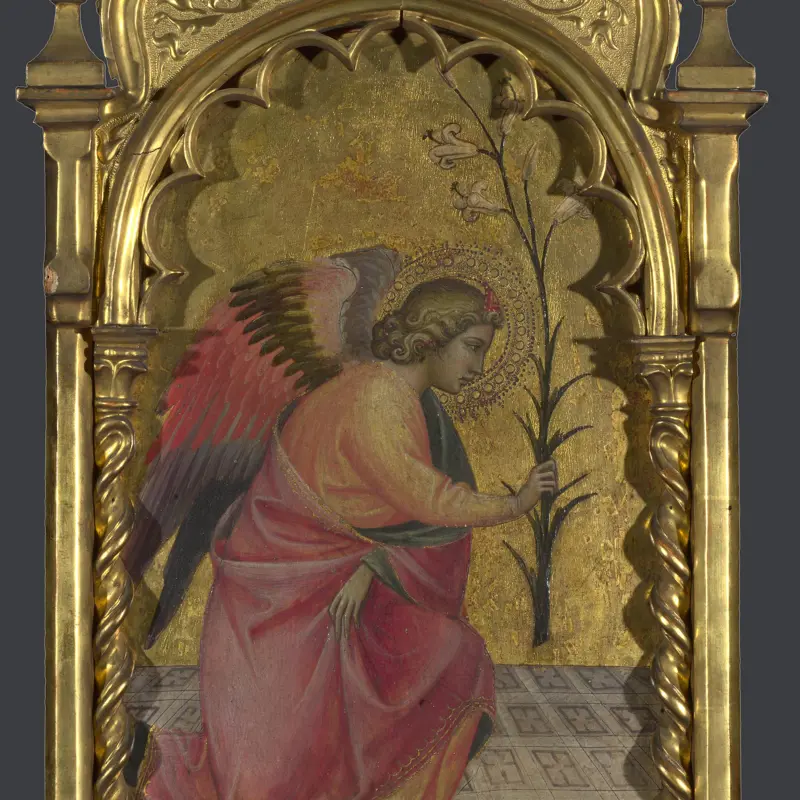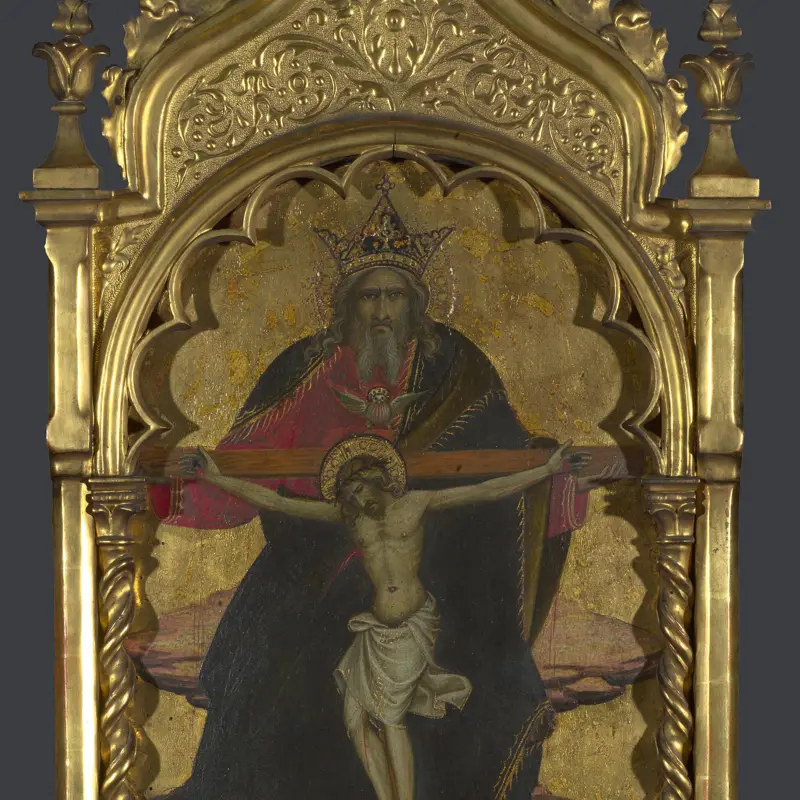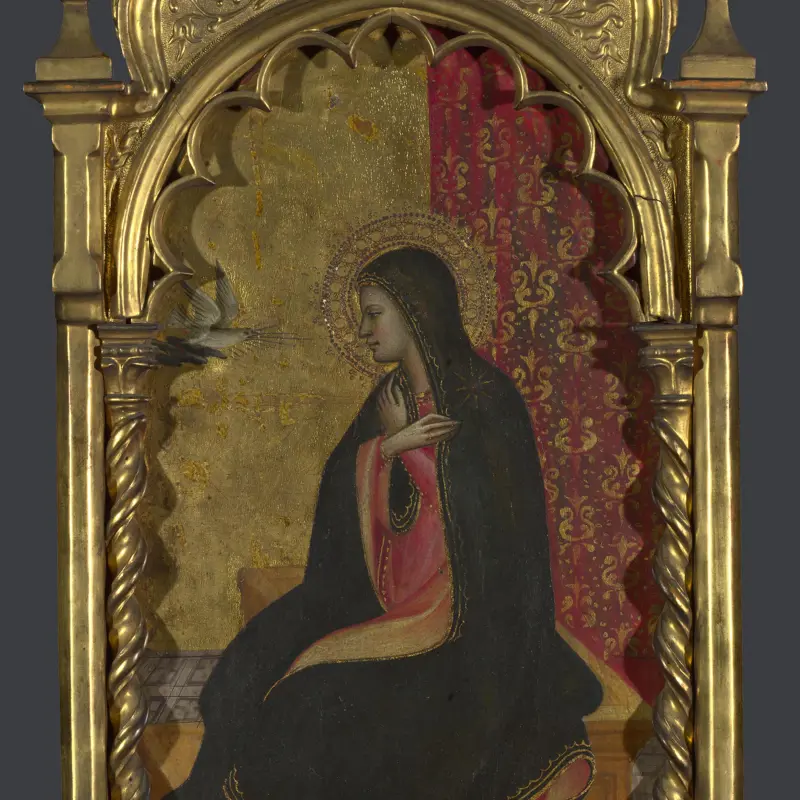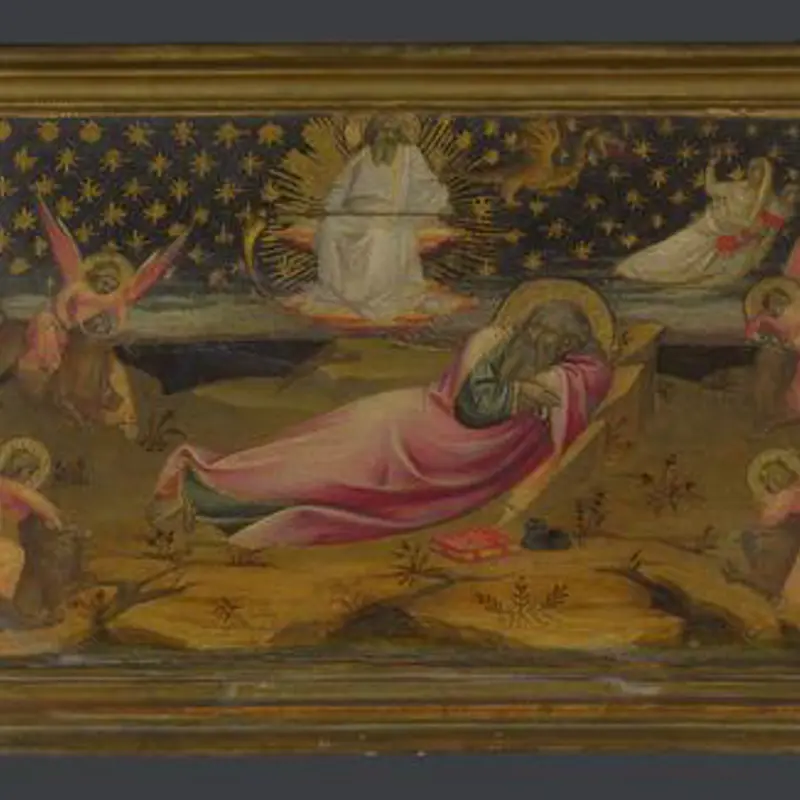Giovanni dal Ponte, 'The Ascension of Saint John the Evangelist', about 1420-4?
About the work
Overview
A bearded saint is being raised to heaven by Christ, who leans out of a cloud to grasp him by the wrists. This is Saint John the Evangelist, usually shown as a young man, but here old, balding and bearded.
This is the centre panel of a large polyptych (a multi-panelled altarpiece) made for the high altar of the church of the Camaldolese nunnery of San Giovanni Evangelista in Pratovecchio in Tuscany. Other panels from the altarpiece are also in the National Gallery’s collection.
The artist, Giovanni dal Ponte, took the story’s details from the Golden Legend, the great medieval collection of saints' lives, and from an earlier painting by Giotto in Santa Croce in Florence. He adapted Giotto’s composition to fit the upright shape of the panel better: Saint John is hauled up vertically rather than sliding diagonally.
Key facts
Details
- Full title
- The Ascension of Saint John the Evangelist: Main Tier Central Panel
- Artist
- Giovanni dal Ponte
- Artist dates
- About 1385 - 1437
- Part of the group
- Ascension of John the Evangelist Altarpiece
- Date made
- About 1420-4?
- Medium and support
- Egg tempera on wood (probably poplar)
- Dimensions
- 163 × 67.8 cm
- Acquisition credit
- Bought, 1857
- Inventory number
- NG580.1
- Location
- Not on display
- Collection
- Main Collection
Provenance
Additional information
Text extracted from the ‘Provenance’ section of the catalogue entry in Dillian Gordon, ‘National Gallery Catalogues: The Fifteenth Century Italian Paintings’, vol. 1, London 2003; for further information, see the full catalogue entry.
Exhibition history
-
2011Devotion by Design: Italian Altarpieces before 1500The National Gallery (London)6 July 2011 - 2 October 2011
Bibliography
-
1878G. Vasari, Le vite de'più eccellenti pittori, scultori ed architettori: Con nuove annotazioni e commenti di Gaetano Milanesi, ed. G. Milanesi, 8 vols, Florence 1878
-
1904P. Toesca, 'Umili pittori fiorentini del principio del Quattrocento', L'arte, VII, 1904, pp. 49-58
-
1906C. Gamba, 'Ancora di Giovanni dal Ponte', Rivista d'arte, IV, 1906, pp. 163-9
-
1906H. Horne, 'Giovanni dal Ponte', The Burlington Magazine, IX/41, 1906, pp. 332-7
-
1923R. van Marle, The Development of the Italian Schools of Painting, 19 vols, The Hague 1923
-
1927R. Offner, Studies in Florentine Painting: The Fourteenth Century, New York 1927
-
1935R. Salvini, 'Lo sviluppo stilistico di Giovanni dal Ponte', Atti e memorie della Regia Accademia Petrarca di Lettre, Arti e Scienze, 1935, pp. 17-44
-
1951Davies, Martin, National Gallery Catalogues: The Earlier Italian Schools, London 1951
-
1958C. Shell, Giovanni dal Ponte and the Problem of other Lesser Contemporaries of Masaccio, Phd Thesis, Harvard University 1958
-
1961M. Davies, The Earlier Italian Schools, 2nd edn, London 1961
-
1970F. Guidi, 'Ancora su Giovanni di Marco', Paragone, 1970, pp. 11-23
-
1982Centro d'Incontro della Certosa di Firenze, Iconografia di San Benedetto nella pittura della Toscana. Immagini e aspetti culturali fino al XVI secolo, Florence 1982
-
1986Davies, Martin, National Gallery Catalogues: The Earlier Italian Schools, revised edn, London 1986
-
1987F. Zeri, La pittura in Italia: Il Quattrocento, Milan 1987
-
1991J. Dunkerton et al., Giotto to Dürer: Early Renaissance Painting in the National Gallery, New Haven 1991
-
1994E.S. Skaug, Punch Marks from Giotto to Fra Angelico: Attribution, Chronology and Workshop Relationships in Tuscan Panel Painting, With Particular Consideration to Florence c.1330-1430, Oslo 1994
-
2001
C. Baker and T. Henry, The National Gallery: Complete Illustrated Catalogue, London 2001
-
2003Gordon, Dillian, National Gallery Catalogues: The Fifteenth Century Italian Paintings, 1, London 2003
About this record
If you know more about this work or have spotted an error, please contact us. Please note that exhibition histories are listed from 2009 onwards. Bibliographies may not be complete; more comprehensive information is available in the National Gallery Library.
Images
About the group: Ascension of John the Evangelist Altarpiece
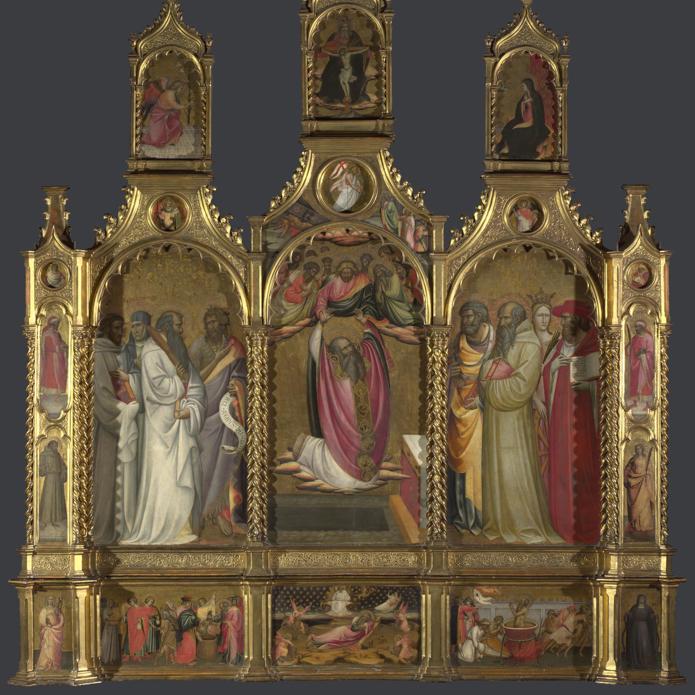
Overview
This large, gilded polyptych (multi-panelled altarpiece) is one of the few almost complete early Renaissance altarpieces in the National Gallery’s collection. It was made for the church of San Giovanni Evangelista, in Pratovecchio, Tuscany, probably in the 1420s.
Altarpieces on the high altar had to show the saint to whom the church was dedicated. Here, in the centre panel, we see Saint John the Evangelist being raised to heaven by Christ. A crowd of saints seems to watch from the large panels on either side.
The nuns at Pratovecchio were Camaldolites – a small, strict religious order found mainly in Italy – and the saints on the altarpiece would have been those who were important to them. This is one of the few surviving paintings of this date which might well have been commissioned by women – two abbesses – for the use of women.

